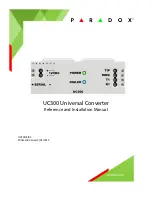
2-13
Catalyst GigaStack Gigabit Interface Converter Hardware Installation Guide
78-6460-04
Chapter 2
Installation
Removing a GigaStack GBIC
Caution
A loop causes excessive collision errors on the port and can cause the link to
become unstable. This instability decreases performance on the links, and
communication between the switches in the stack is adversely affected.
If a Catalyst switch is connected through its GigaStack GBIC to another switch’s
GigaStack GBIC that does not support loop detection, the GBIC LEDs turn these
colors:
•
The GigaStack GBIC LED on the switch without loop detection turns green
almost immediately.
•
The GigaStack GBIC LED on the switch with loop detection flashes green for
15 seconds and then turns green.
As a result, all GBIC links are enabled if no loop is created. If a loop is
present, the software does not detect it, excessive collisions occur on these
ports, no traffic passes through the stack, and the GigaStack GBIC LEDs
remain green.
To avoid problems with loop configurations, make sure that all switches in your
stack are running the appropriate IOS release as shown in
Table 1-5 on page 1-8
.
For more information, see the
“Minimum IOS Release for Redundant Loop
Configurations” section on page 1-7
. For switch software upgrade information,
refer to the release notes for your switch.
Removing a GigaStack GBIC
Remove a GigaStack GBIC as follows:
Step 1
Release the GigaStack GBIC from the slot by simultaneously squeezing the two
plastic tabs (one on each side of the GigaStack GBIC).
Step 2
To remove, slide the GigaStack GBIC out of the slot. A flap drops down to protect
the internal connector.














































